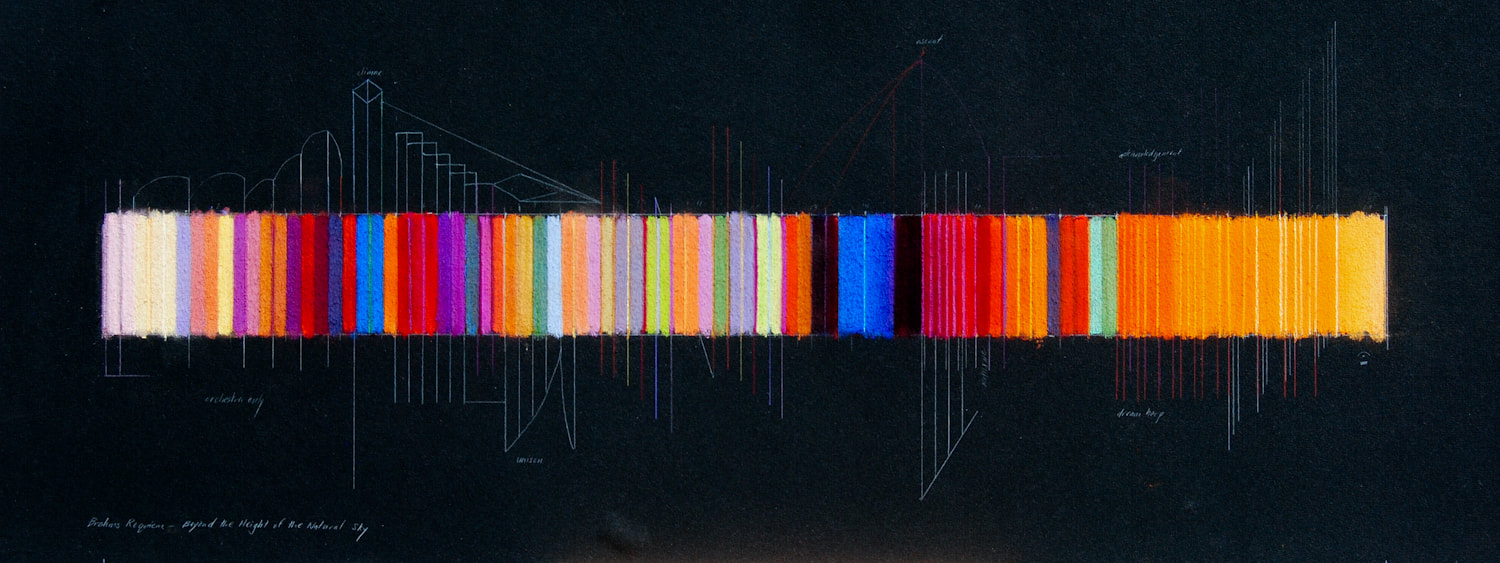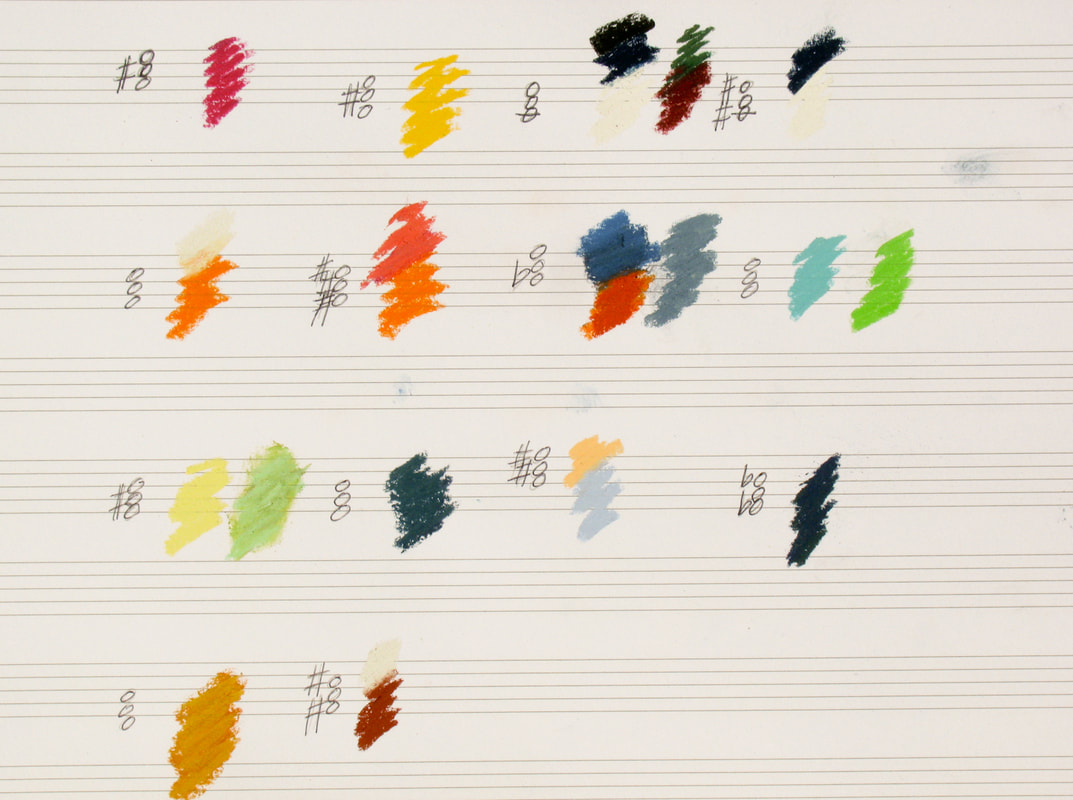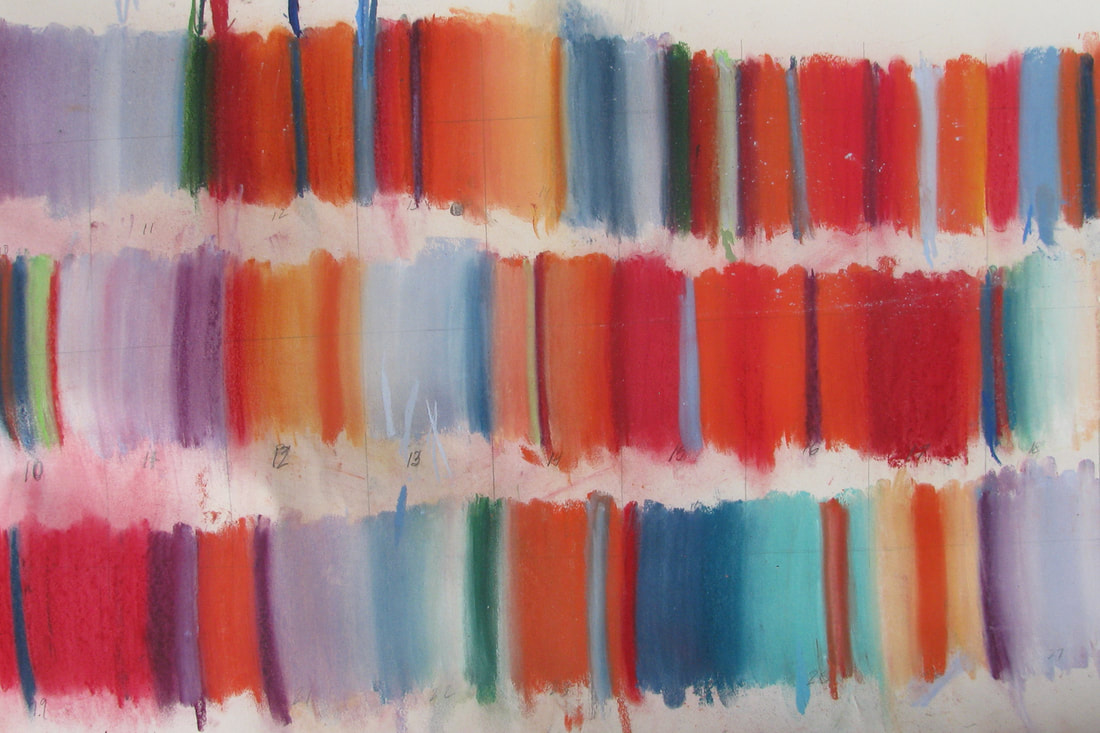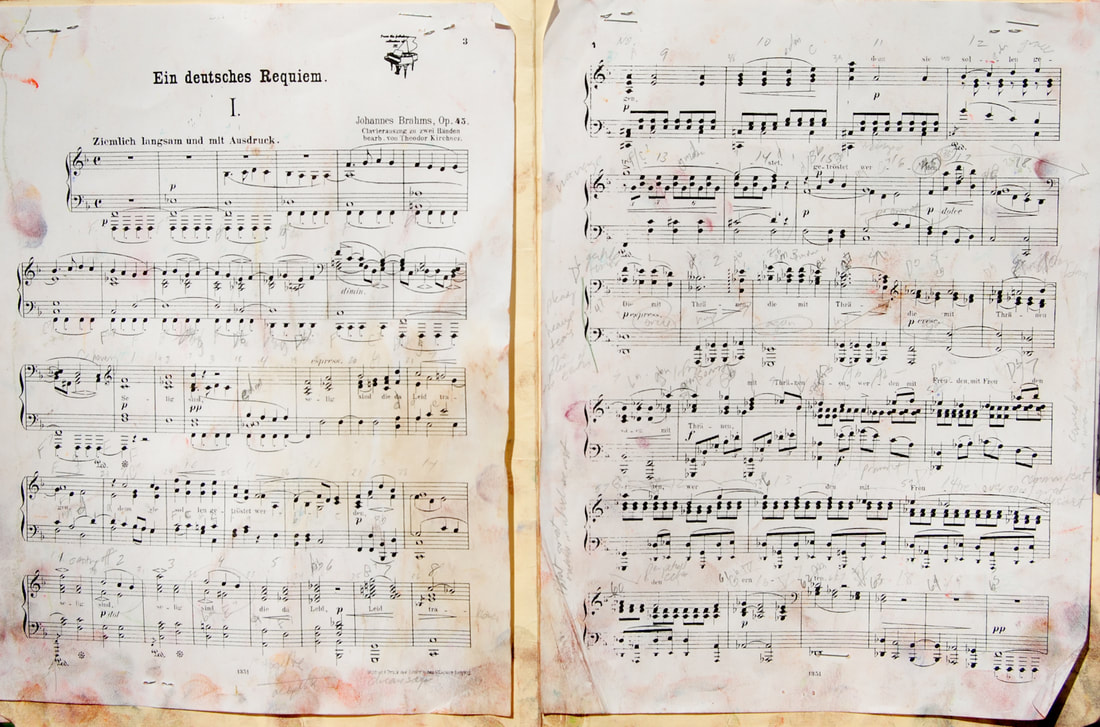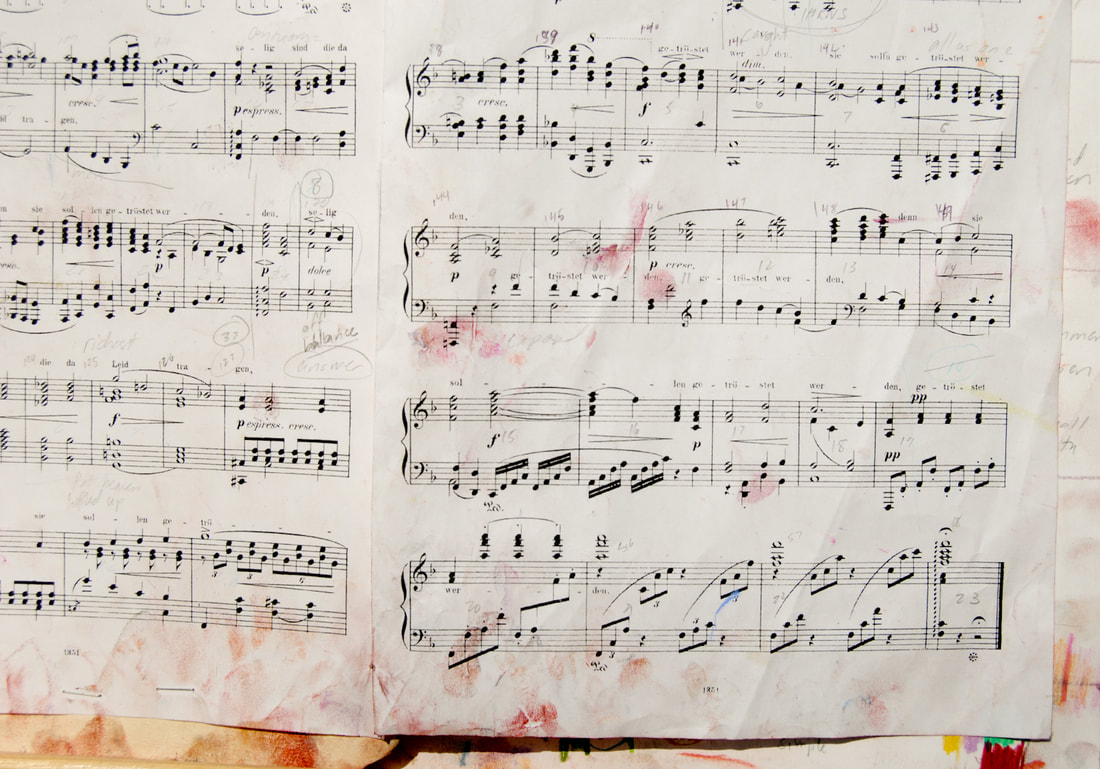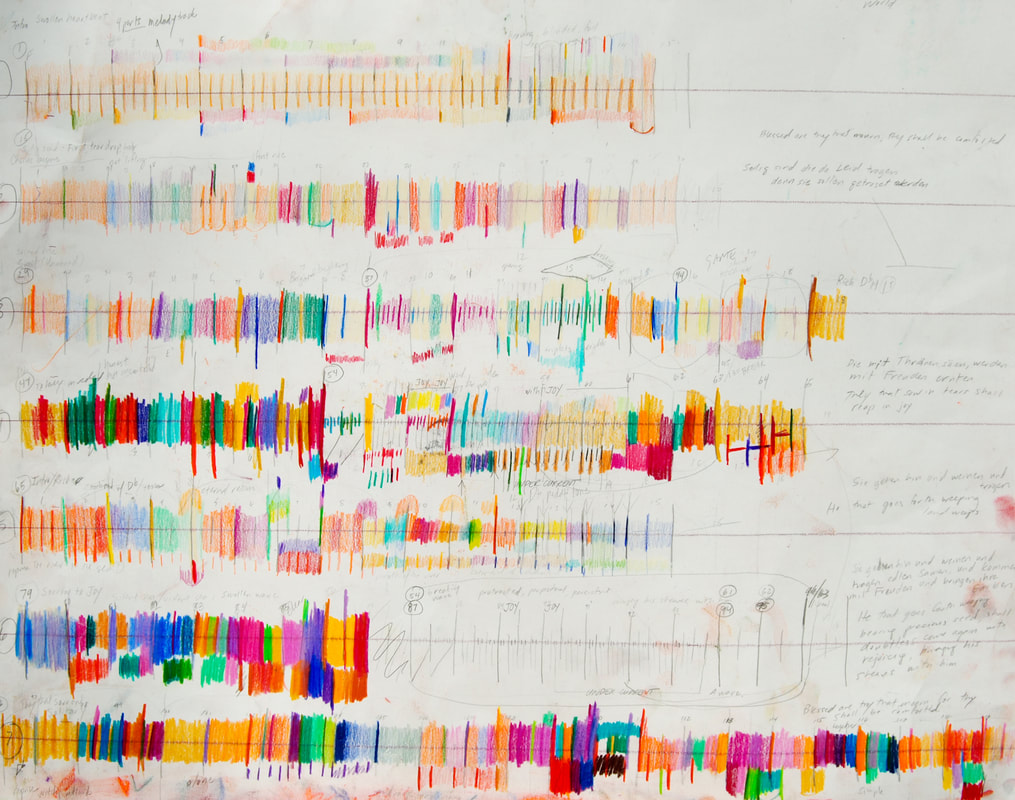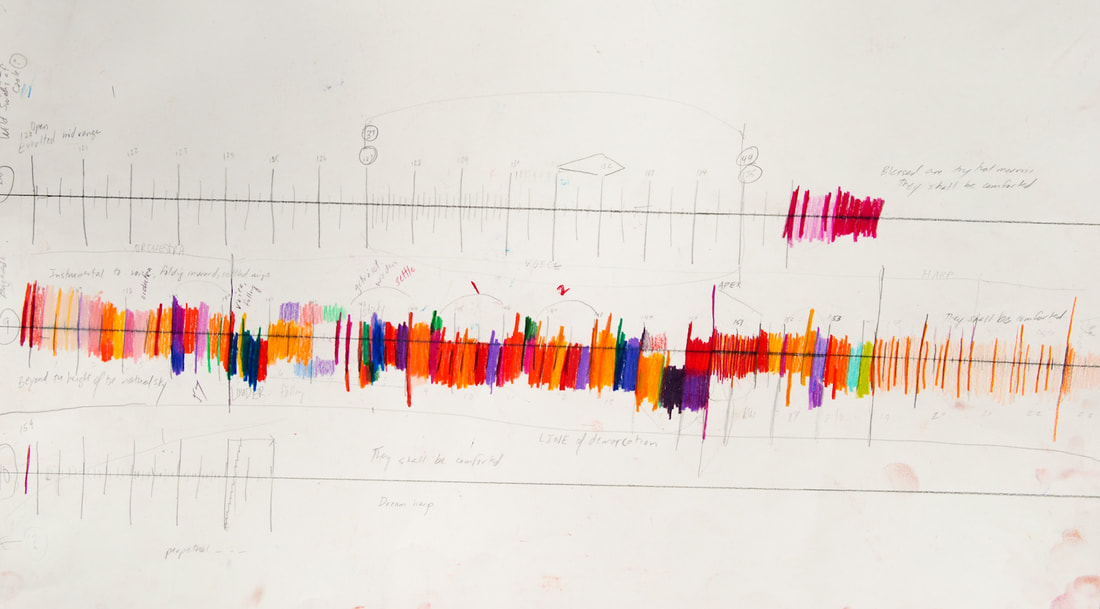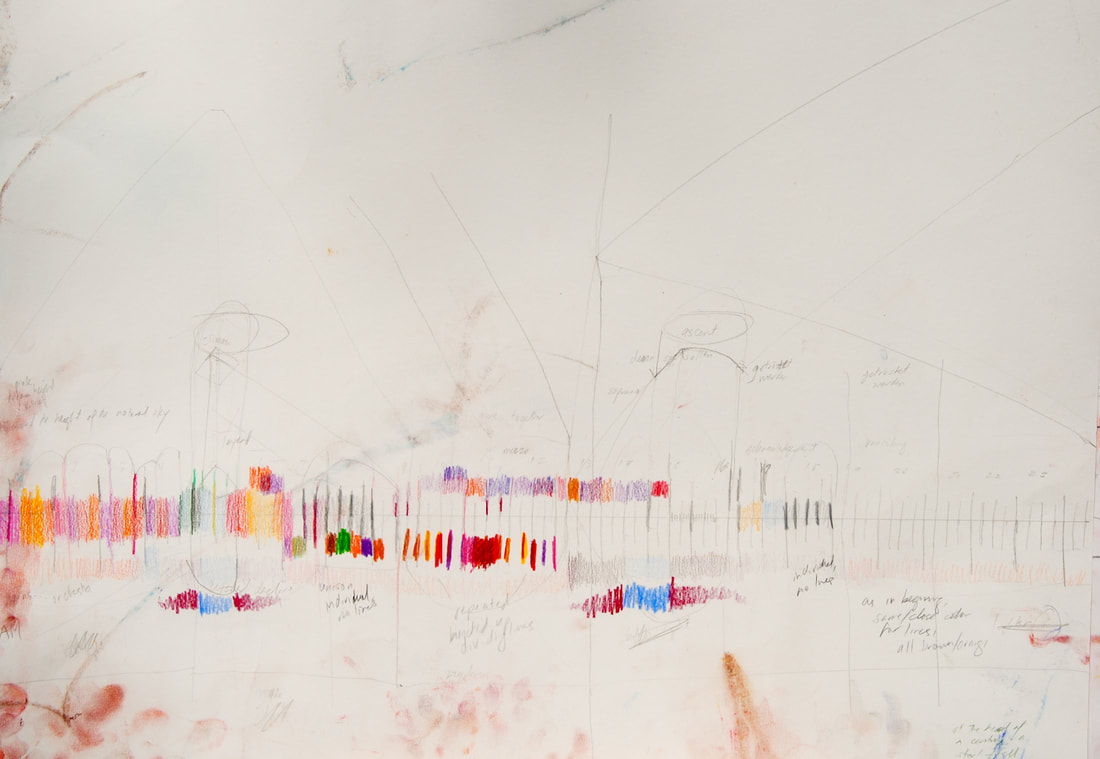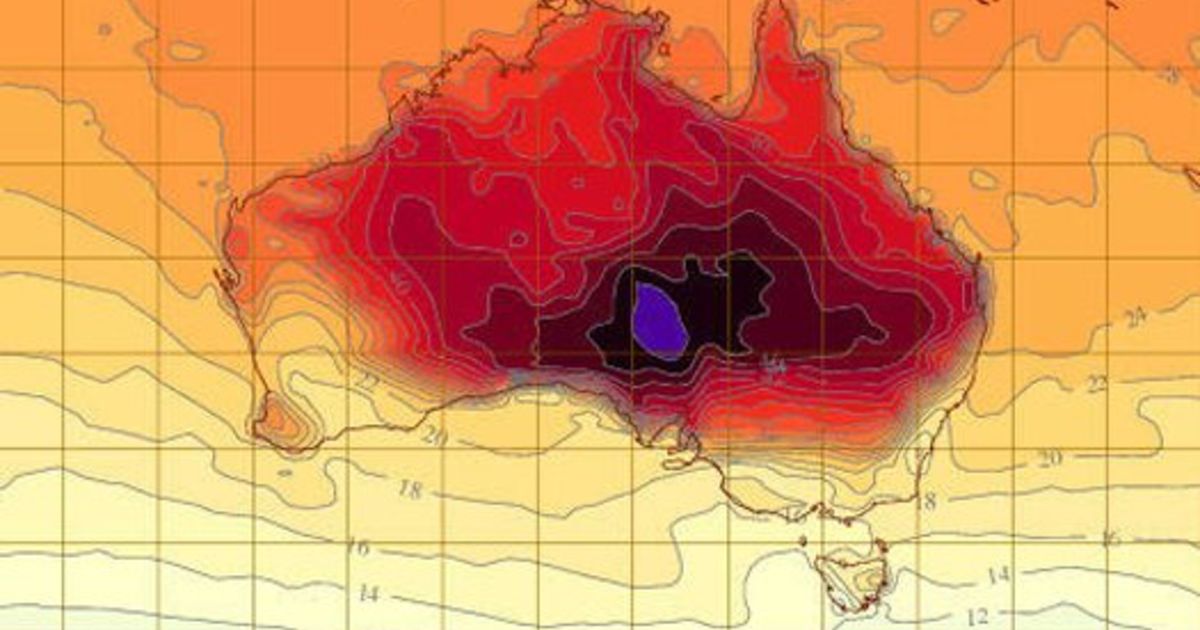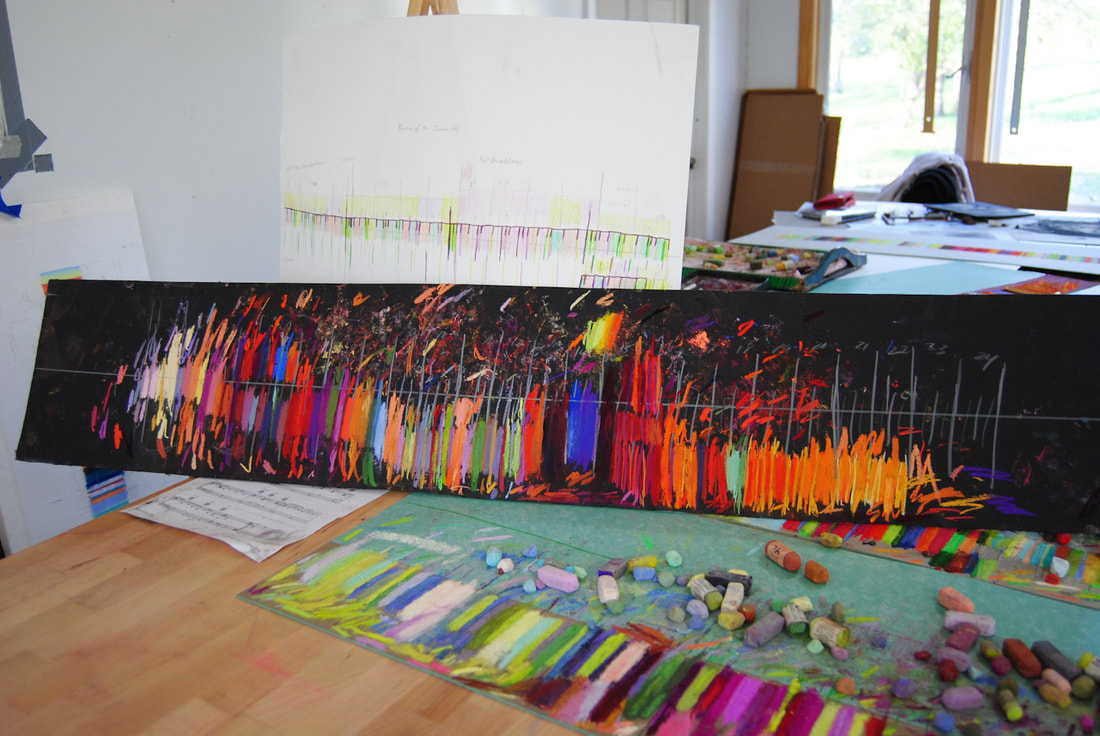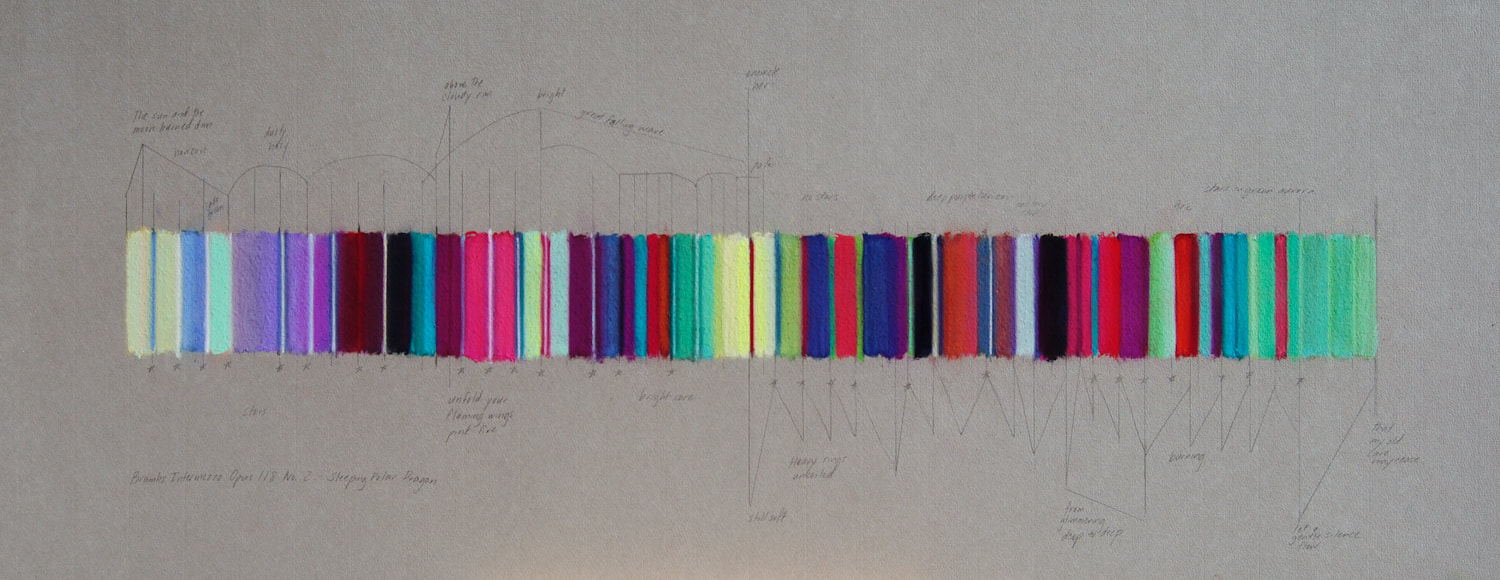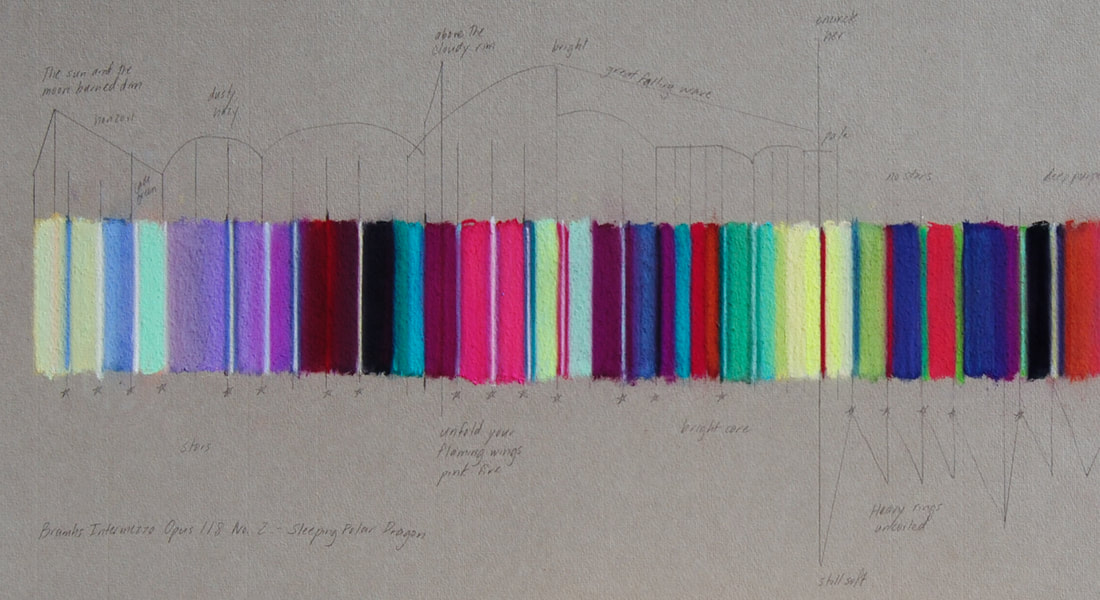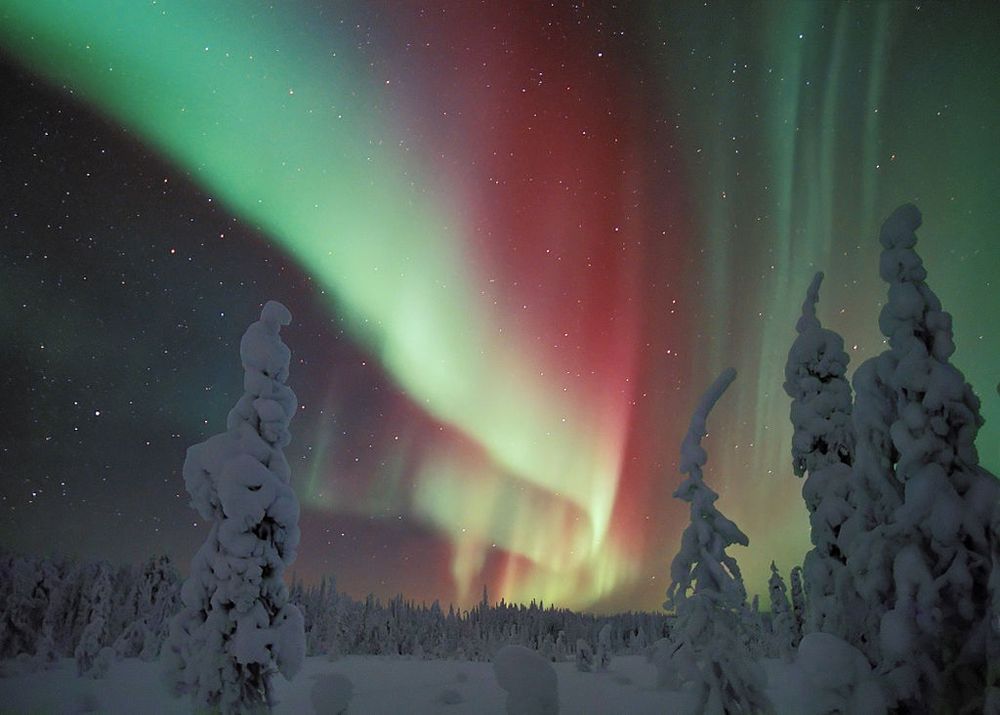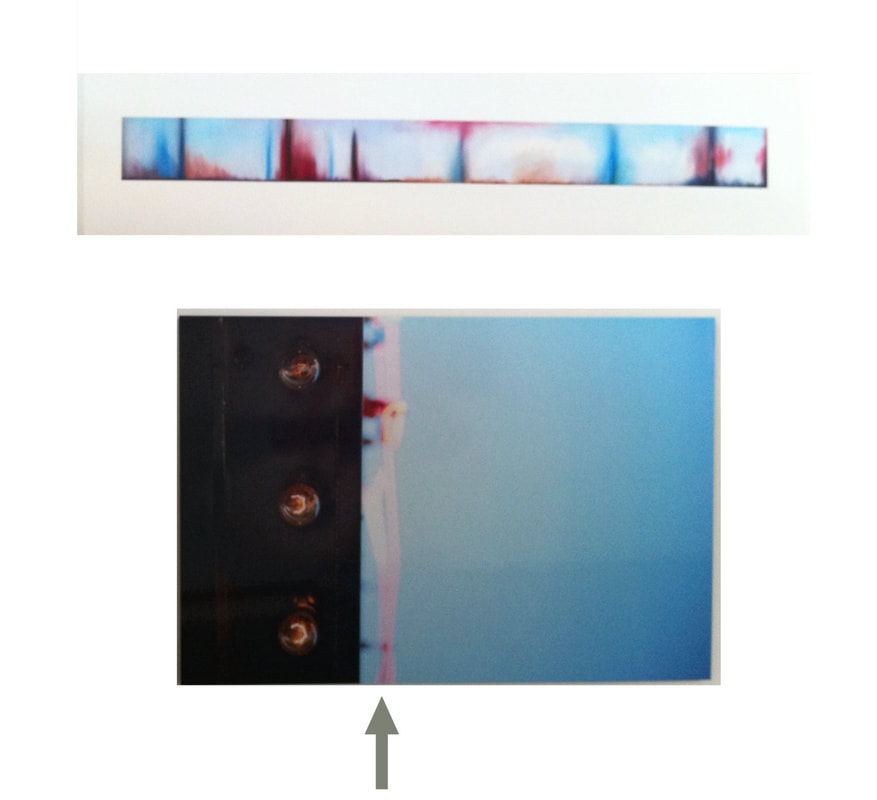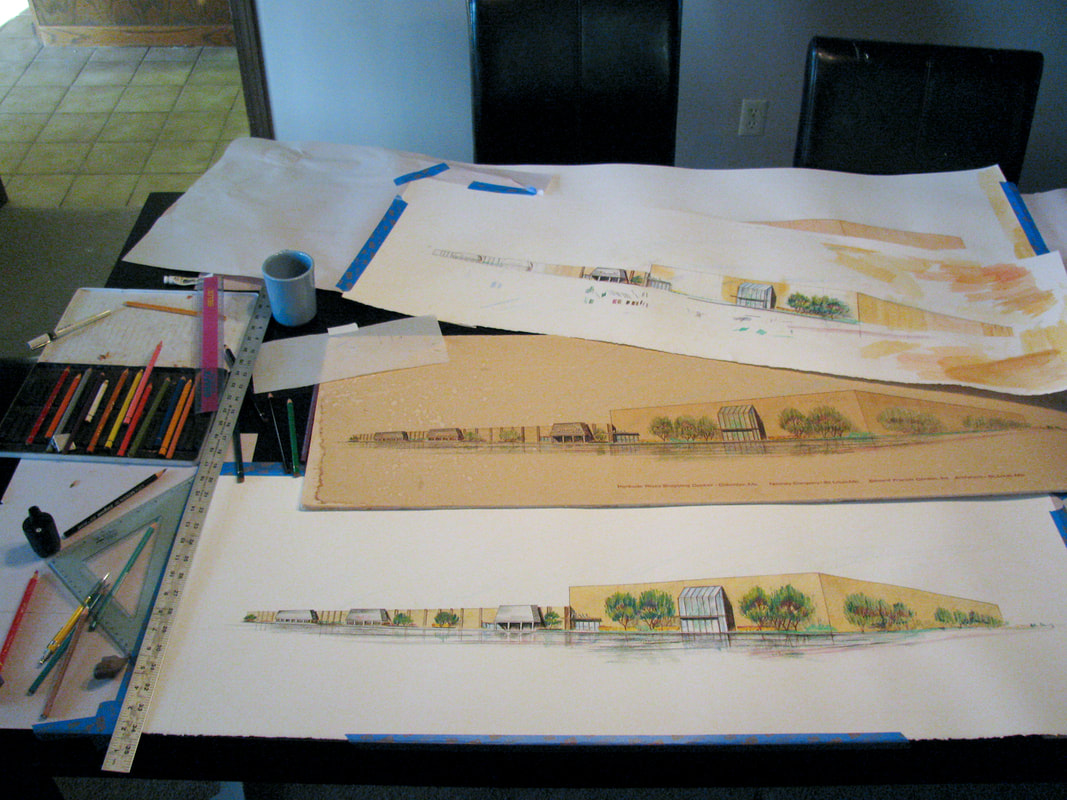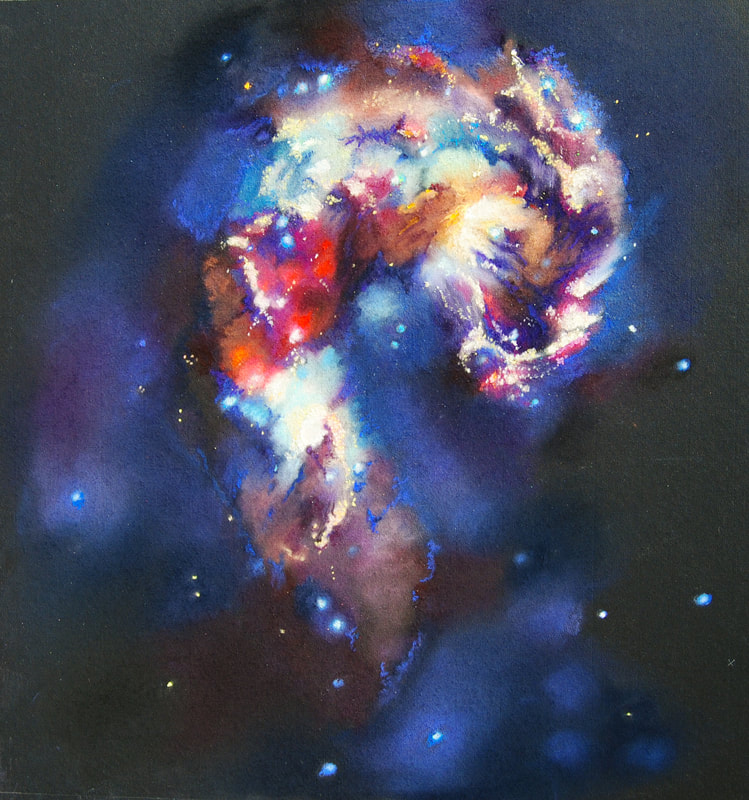How I Paint Music
How Musical Patterns Become Color
|
I naturally associate musical patterns with colors. I learned to read music around the time that I learned to read words, and this association developed at that time. Later in life, I received formal training in music and became able to talk about these color patterns as musical harmonies. I've made a map of my color associations as a way to explain these connections. They are consistent, I cannot change them. This high level of consistency allows me to create colorful and trackable linear patterns based on musical harmonies. There are some colors I prefer, but the information I get from the colors is largely not about how the music feels to me when I hear it.
|
|
My ability to connect music to color is only helpful to me if I am playing music I have played before. I can use a small patch of color prior to a key change to remember and process the change quickly. Otherwise, it simply carries visual information about music and perhaps enhances the experience of listening for me, though I actually do not know the difference. In fact, I did not know that my experience of music was unique until I was 37 and painted my first musical pattern. After that, I got a lot of questions about how and why I paint music. In the end, I believe that for those of us who are captivated by music, the experience of music synthesizes a great deal of complex information, regardless of whether that includes color. I often wish I could see and hear what others do when they experience music.
|
Selecting Music
Beyond the Height of the Natural Sky is based on harmonic patterns in Johannes Brahms' Requiem, Movement 1.
Sketching a Musical Pattern
Here are the first pencil sketches of the Requiem.
Connecting a Musical Pattern with a Landscape
Colored musical patterns sometimes "line up" with images in real life, particularly landscapes. I first noticed this when I realized that a sunset on a large field or body of water is a series of stacked horizon lines from the viewer to the sky. I can enhance a musical pattern with different shades, tints, or saturation to take on the characteristics of a specific landscape while preserving the structure of the music. Recently, I became interested in satellite images of landscapes, particularly areas of habitat loss due to human dominion and climate change.
Other Markings and Text
The markings and text you seen on my paintings refer to the structure of the musical pattern, the characteristics of a landscape or other subject, and other elements in the music such as dynamics, melody, or texture. For example, Sleeping Polar Dragon below contains text from W.B. Yeats' The Poet Pleads With the Elemental Powers, integrating them with a display of the colors of Aurora Borealis shifting with the harmonies of Johannes Brahms Intermezzo for piano, Opus 188 No. 2.
The Poet Pleads With the Elemental Powers |
More About Music and Visual Art
|
I am sometimes asked if this process works the other way around - Do I hear music when I see colors? As it turns out, no. On rare occasions I do see something that looks like music. Once, a friend took a photograph of a neon light fixture from the side. The vertical pattern of the tubes, arranged horizontally, looked like a pattern of unrelated chords. I created a painting of the tubes. This painting is very close to what music actually looks like to me.
|
Other Artwork
I create realistic paintings and drawings, and copies of other artwork. For example, I worked on an archeological dig in Belize for UT-Austin illustrating artifacts. I supplied artwork and acted in a commercial for a healthcare merger. I recreate damaged illustrations, paint with pastel and watercolor, and draw with ink. Some aspects of copying are similar to painting music, but mostly it is simply a native skill. Even so, if I get better at painting things that I see with my eyesight, I also get better at painting what I can only see in my mind.
|
The Artist from Chimaeric Motion Pictures on Vimeo. |
